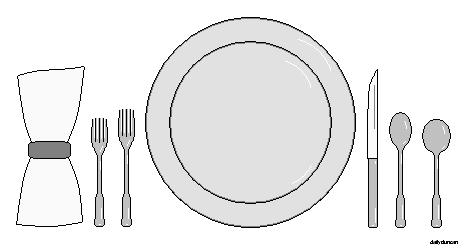Thanks to food safety programs, most of us are well-schooled in the preparation of safe food. We know that we should wash our hands before cooking, that meat must be cooked to a safe temperature and that we should, according to the FDA, “wash cutting boards, dishes, and utensils (including knives), and countertops with soap and hot water after [emphasis in the original [emphasis added]] they come in contact with raw meat, poultry or seafood.”
Although such food safety steps are largely based on sound science and reason, it’s concerning that the federal government does not consider poultry or seafood to be meat. Anyway, we’ve built a structure of regulations to protect ourselves from contamination. But, like the sanitation triangle, it all comes crashing down as soon as one of the supports is knocked out.
Let’s test our familiarity with food safety by taking a look at an example of a chef cooking a simple dish. See if you can spot any instances of cross contamination.
- The chef washes his hands thoroughly.
- He grabs a fresh, uncooked chicken breast from the package and places it on a clean cutting board.
- Using a clean, sharp knife, the chef fillets the chicken boob.
- The chef washes his hands thoroughly.
- Using a clean pair of tongs, he picks up the fillets and places them in a clean, preheated frying pan.
- He then washes his hands, the cutting board, the knife and the countertop.
- Using the tongs, the chef flips the meat over to ensure even cooking.
- After measuring the internal temperature of the meat using a food thermometer, the chef concludes that the meat is safe to consume.
- He removes the chicken from the frying pan with the tongs and places the cooked meat on a clean plate.
- The chef washes his hands, the frying pan and the tongs, then serves the dish.
If you said that the contamination occurs at steps 8 and 10, when the chef failed to wash the thermometer, then you’re not correct. Since the thermometer measured a safe cooking temperature, we know that there’s no way that it could be contaminated. Of course, it’s not the most hygienic decision to leave the thermometer uncleaned, as it may eventually pose a problem, but there is no immediate threat of contamination.
The thermometer, though it came into contact with raw meat, endured the cooking process and was raised to a temperature that rendered it safe to consume (if it weren’t a thermometer). However, between transferring the raw chicken to the frying pan, flipping the meat and placing it on the plate, the tongs underwent no such process.
The infraction occurred when our chef, like nearly every cook across the globe, used the same utensil to handle the meat throughout the cooking process in steps 5, 7 and 9. As mentioned earlier, food safety regulations make it clear that we should wash our hands, surfaces and utensils after making contact with uncooked meat, but for some reason we fail to apply this to the tool we use to move our meat.
It’s not clear why we don’t seem concerned about our tongs and spatulas. Perhaps we do secretly recognize the threat, but we subconsciously concede that it would be far too annoying to wash the tool after each time we transfer, rotate, flip, poke, prod and peer underneath our meat. Or maybe, as with bathroom sanitation, we just know that we’re probably going to miss a step somewhere along the way.
